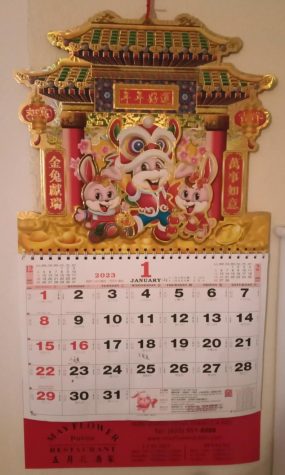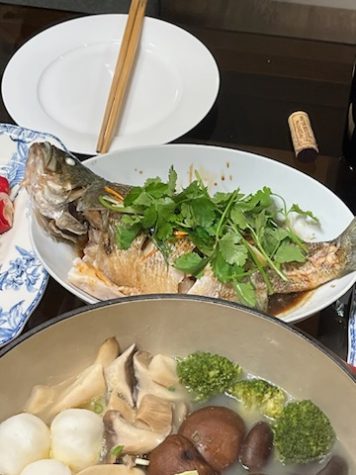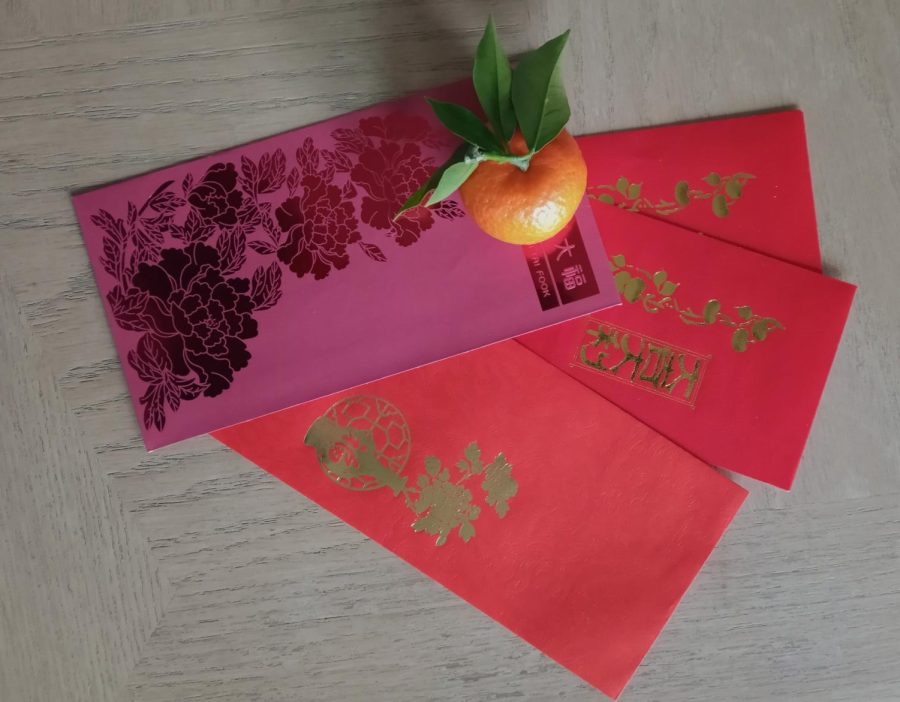People all around the world mark the end of the year in different ways. One of the largest celebrations is the Spring Festival, celebrated in China and Chinese communities around the world.
The Chinese Lunar New Year begins with the new moon that occurs sometime between Jan. 21 and Feb. 20, according to Western calendars, and continues for 15 days. The Lantern Festival occurs on the 15th day of the first lunar month and marks the end of the Spring Festival celebration.
“It helps me celebrate my family and friends, and since I’m not able to visit China due to Covid-19, I can feel a little closer to China and my own culture,” said Catherine Wang, a sophomore at Carlmont.
In China, people travel home to celebrate the New Year with their families. It is the world’s largest annual migration; in Mandarin, it is called chunyun, meaning spring travel.
The history behind the Spring Festival
The history of the Spring Festival can be traced back about 3,500 years to the Shang Dynasty, when people held sacrificial ceremonies to honor the gods and ancestors at the beginning or the end of each year.

Over the centuries, as China prospered and evolved, the Spring Festival celebration transitioned from a purely religious activity to a more entertaining and social event.
Like many traditions, the Spring Festival is rooted in legends and myths.
One of the most popular legends is that of the beast Nian. Nian had a lion-like head and long, sharp teeth. At the end of each year, it would come out and terrorize the people of nearby villages.
A wise old man advised the villagers to use weapons to scare away the beast. The villagers put up red couplets, hung red lanterns, set off firecrackers, kept the lights on, and stayed up late to scare away Nian.
Chinese Lunar New Year is always represented by one of the 12 animals from the Chinese zodiac. According to the legend, these 12 animals were chosen by the Jade Emperor and competed in a race of speed. The 12 zodiacs include the rat, ox, tiger, rabbit, dragon, snake, horse, sheep, monkey, rooster, dog, and pig.
How the Spring Festival is celebrated
The Spring Festival includes many traditions, such as visiting relatives and friends, eating symbolic food, watching lion and dragon dances, paying respects to elders, and welcoming different gods.
Store owners prepare for the new year by purchasing necessities like food, various decoration, and gifts for everyone.

Families clean their homes before the New Year to get rid of bad luck. They decorate their houses with couplets pasted on door panes and write Chinese calligraphy.
Elders of the family prepare elaborate meals; making dumplings as a family is a popular tradition.
One mealtime tradition is to put a coin or jujube into a dumpling. If someone gets a coin, it signifies financial luck in the New Year, and a jujube signifies romantic luck.
Adults, married couples, and elders have a custom where they give children red envelopes, or hongbao, containing money to bring prosperity and good fortune in the coming year.
After dinner, the whole family often sits together to watch television. In recent years, the Spring Festival broadcast on China Central Television Station (CCTV) has become essential entertainment for many Chinese.
There are regional differences in how the festival is celebrated. In Southern China, the festive meal includes fish, which represents prosperity and abundance for the year. In Northern China, the festive meal has dumplings, which are shaped like silver ingots, representing wealth, reunion, and fortune.
The Lantern Festival is the last event of the 15-day celebration. People hang glowing lanterns in their houses and attend nighttime parades.
Traditional versus modern practices
Today, many traditional activities are disappearing, and new trends are being introduced. Many people find it too time-consuming to prepare dumplings at home and end up buying frozen ones instead. Others prefer to have their New Year’s eve dinner in restaurants.
Many cities are also putting restrictions on fireworks because of pollution concerns, so more people visit public fireworks displays instead of lighting them at home.
Sometimes, due to complications, people cannot visit their homes during the Spring Festival, so some send their red envelopes digitally. For example, through WeChat, the Chinese instant messaging app.
People around the world celebrate the Chinese Spring Festival in different ways. To many, this is an important Chinese festival that brings families together in celebration and joy.











